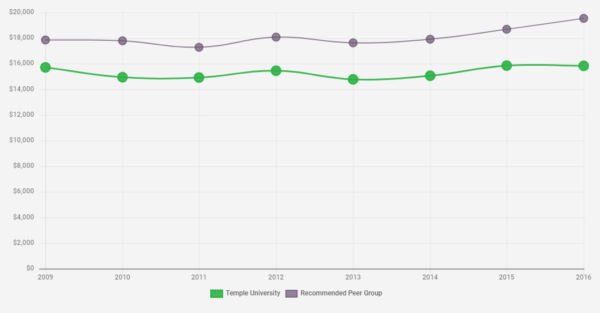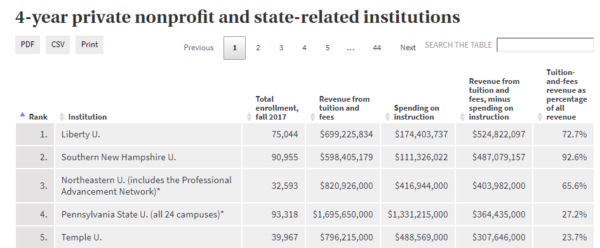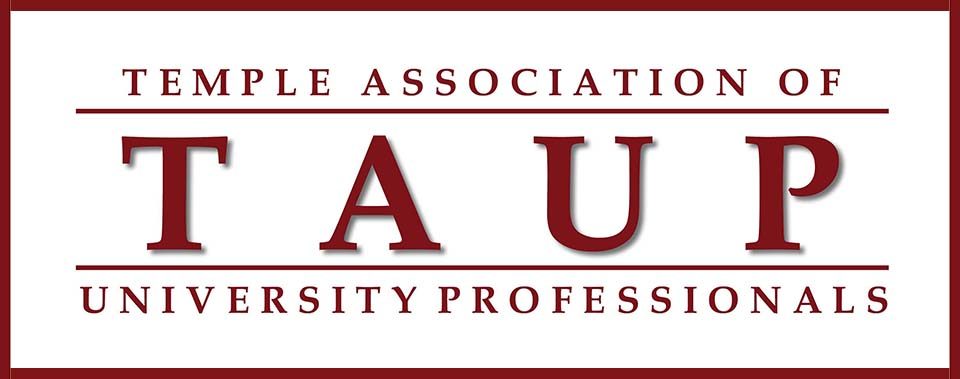Yesterday, we shared data from The Century Foundation revealing that Temple ranks dead last among public Research I universities in the amount it spends on instruction relative to the amount it takes in from tuition and fees. The Century Foundation identifies itself as progressive, and we understand that in our hyperpartisan age, some may be skeptical.
So, today, we are sharing a study of instructional spending from an organization that is on the more conservative side of the political spectrum, the American Council for Trustees and Alumni (ACTA). In addition, data from The Chronicle of Higher Education extends the same bleak picture of Temple’s instructional spending.
Founded by Lynne Cheney in 1995, ACTA has received funding from various conservative foundations, including the Bradley and Scaife Foundations. However, it also has officers and members of its board of directors who do not identify as conservative, such as Stephen Trachtenberg, formerly the president of The George Washington University. ACTA’s mission: “[T]o support liberal arts education, uphold high academic standards, safeguard the free exchange of ideas on campus, and ensure that the next generation receives a philosophically rich, high-quality college education at an affordable price.” A recent tool ACTA has developed, How Colleges Spend Money, considers instructional spending from an angle different than though adjacent to The Century Foundation’s approach. Where The Century Foundation focuses on cents-on-the-dollar spent on instruction, ACTA considers how much universities spend on instruction per student.
Their findings are in line with The Century Foundation’s; our university shows very poorly when compared to its peers. Here is a chart tracking Temple’s inflation-adjusted instructional spending per student compared to its recommended peer group from 2009-16, the latest year data is available from the U. S. Government’s IPEDS (the Integrated Post-secondary Educational Data System). The peer group consists of the institutions identified by Temple’s administration itself when it submits data to IPEDS: Penn State, Pitt, the University of Arizona, the University of Cincinnati, the University of South Carolina, the University of South Florida, and the University of Utah.

In 2009, Temple’s instructional spending per student was $15,714. Its comparison group’s was $17,855.
In 2016, Temple’s instructional spending per student was $15,836. Its comparison group’s: $19,541.
This shows that:
- a) Temple’s instructional spending per student was basically flat;
- b) The gap between what Temple spends per student in relation to its peer group almost doubled from 2009 to 2016 from slightly over $2K to almost $4k less spent per year per student.
While we think the data from both of these groups is unimpeachable, there is a third, non-partisan source to include in the discussion. Recently, The Chronicle of Higher Education published data ranking institutions of higher education based on how much they spent on instruction relative to how much they collected from tuition and fees. It is closer to the Century Foundation’s tabulations, but it gives a sense of just how much money Temple and other universities took in relative to what they spent on instruction.
In Temple’s case, the data shows that Temple collected $307.6 million more in revenue from tuition and fees than it spent on instruction. As the table below indicates, the university is 5th from the bottom among 1,093 private non-profit and state-related institutions.

Some may see The Chronicle’s data and object by saying that though it may not look good that Temple is in the company of Liberty University and Southern New Hampshire University (which run huge online operations that have elicited concerns about educational quality), The Chronicle’s comparisons put Temple up against universities like Harvard and Penn who have huge endowments and can thus spend more from that on instruction. And Penn State, which also has a much bigger endowment, has an even bigger surplus than Temple.
True. But while Penn State did have a larger surplus than Temple, they also spent much, much more per student than we did according to the ACTA study. In 2009, Penn State spent $29,185 per student while Temple spent $15,714. In 2016, Penn State spent $32,237 while Temple spent $15,836. Penn State’s high level of spending raises the average for the group and accounts for some of the gap between Temple and its peers. If we return to the Century Foundation’s numbers, Penn State spends $0.79 on instruction per dollar of tuition and fees where we spend only $0.61.
As we said yesterday in our comments on the Century Foundation study, these numbers do not translate directly into educational quality. There are factors such as state support and the size of a school’s endowment that should be considered when making a judgment. But even with those caveats in mind, these studies of the data all strongly suggest that Temple spends nowhere near what it could and should on instruction relative to the peers it chooses, whether that set is the one it selects for IPEDS or the Research 1 group we are proud to be a part of, thanks to the stellar work of our faculty, or relative to the entire higher education sector. Again, according to the Century Foundation data, our spending on instruction per dollar of tuition and fees puts us closer to the average of for-profit universities than public universities.
Given that it appears that so little is being spent on our students and the work of the faculty, librarians, and academic professionals who support them, and given how well Temple has been doing in bringing in revenue, one has to question how the administration is making decisions about its spending. If the money isn’t going to instruction, where does it go?
We hope that the administration has an explanation that makes this look less troubling, and would like to hear their response to these findings.
We believe that the administration can be making choices that would greatly improve the educational environment for students at the university. The administration can choose to hire more tenure track faculty. They can invest in the job security and livelihoods of contingent NTT and adjunct faculty. They can support child care for members of the bargaining unit (and others) and real maternity leave for librarians and academic professionals. They can invest in more hiring and support for women and people of color. And they can do better on many non-financial issues, such as ensuring that guidelines for merit are clear, and that SFFs are used responsibly in decisions that affect people’s careers.
These are all issues that TAUP has put on the table in negotiations with the administration. Decisions are being made, and the faculty, librarians and academic professionals of TAUP are demanding that the university shows that it is investing in the highest quality of education Temple University can offer.

